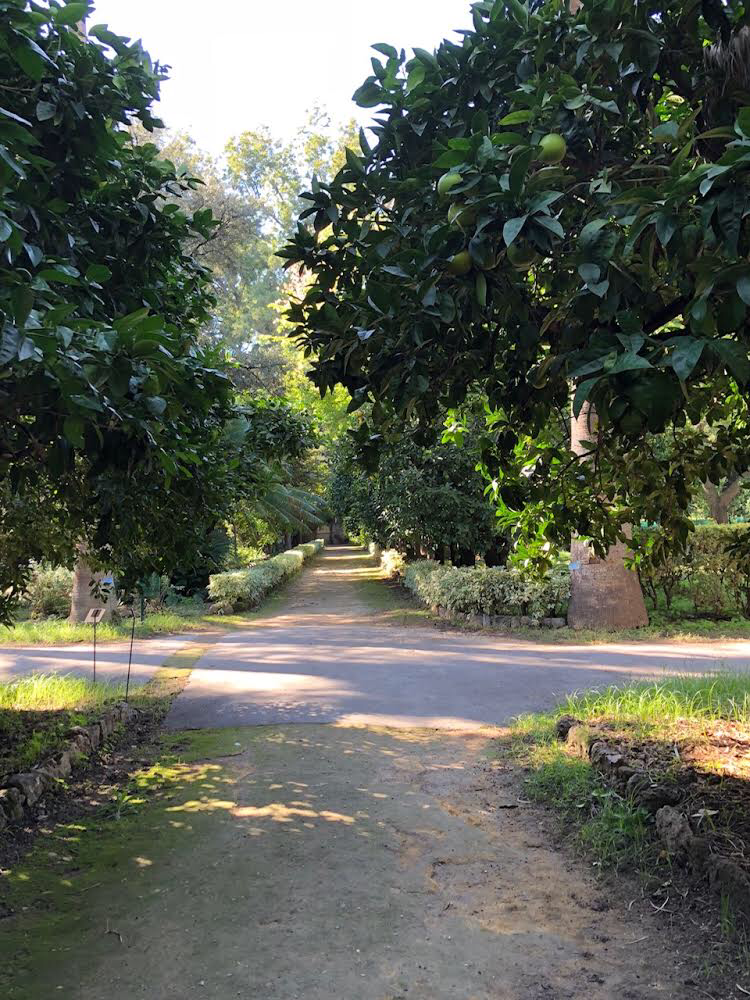Eat too much fried panelle and looking for a great place in Palermo to take a long walk?You could be looking for something to do in the afternoon while shops and restaurants close for a few hours. Do yourself a favor and spend an afternoon visiting Palermo’s exceptional Botanical Gardens.
This enormous outdoor museum has been around for nearly 200 years, dating back to the late 18th century. Because of Palermo's favorable climate, many unknown and poorly classified exotic tropical plants were able to thrive here. As a result, Palermo became an important point of reference for other large botanical gardens around Northern Europe. And today, Palermo’s Botanical Garden contains at least 12,000 different species of plants!
When you first arrive to the botanical garden in Palermo, you’ll see a central neo-classical building, known as the Gymnasium. Two smaller buildings are located either side are the Calidarium and the Tepidarium. Originally these smaller buildings housed plants from warm “caldo” and temperate “tiepido” zones.
The oldest section of the gardens is the rectangular Linneian. It is divided into four quarters that is then split into flower beds. The Aquarium is a large round pool surrounded by the lagoon and other small ponds that hosts a variety of aquatic flora.
The Winter Garden is a series of 1,300 square-meters of greenhouses gifted by Queen Maria Carolina of Austria. Originally, it was constructed of wood and heated by stoves, but eventually it was completely rebuilt in cast-iron. Other greenhouses are filled with succulents, coffee plants, cinnamon, bougainvillea and mimosa, bananas, papaya trees, ferns, and other plants from hot-arid climates like Africa, Central America, South America, Asia and Australia.
The Herbarium Mediterraneum was founded at the beginning of the 19th century and hosts a collection of plants, ferns, mosses, funghi and lichens that come from Sicily. It contains a diverse selection of preserved and dried fruit and seeds dating back to the early 20th century. During the summer season, the garden staff collects plants and seeds throughout Sicily that will be identified and stored in the botanical garden’s Seed Bank.
A new addition to the Botanical Gardens is Radiceterna Arte e Ambiente, a non-profit cultural association dedicated to the production, support, and development of contemporary art. Through exhibitions, publications, lectures and live performances, they have created a platform to encourage the public to engage with contemporary art in an environmentally sustainable way.
How to visit the Botanical Gardens in Palermo?
Here’s the info for the Radiceterna Project:
www.radiceterna.org | May–November: 9AM-1PM, 2PM-6PM | Calidarium Pavillion
Here’s the info for the Palermo Botanical Garden:
Orto Botanico dell'Università degli Studi di Palermo
Via Lincoln 2, Palermo 90133, Sicilia, Italia | +39 91 23891236 | ortobotanico@unipa.it
Hours:Open every day except December 25 and January 1st.
March: 9AM-6PM
April: 9AM-7PM
May - August: 9AM-8PM
September: 9AM-7PM
October: 9AM-6PM
November - February: 9AM-5PM
Entrance Fees:
€5 general entry
€3 for students, children ages 6-17, adults over 65
€10 Family Ticket includes two adults, two children
Free entrance for children under 5, disabled guests and their companions, and University of Palermo students.






